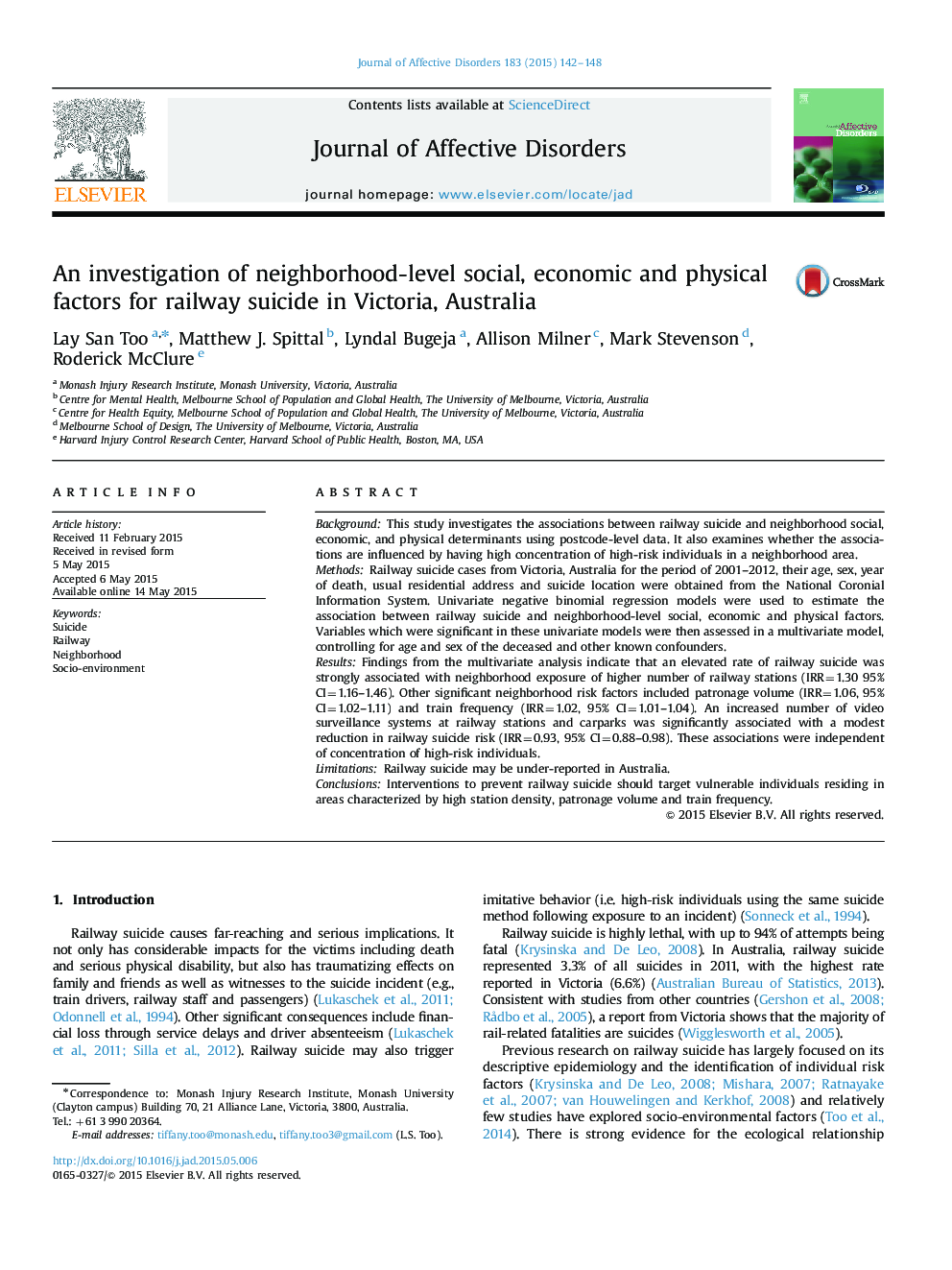| Article ID | Journal | Published Year | Pages | File Type |
|---|---|---|---|---|
| 6231447 | Journal of Affective Disorders | 2015 | 7 Pages |
â¢We comprehensively examine neighborhood factors on railway suicide risk.â¢Local areas of high number of station, patronage, and train were at high risk.â¢Interventions should target vulnerable groups residing in these areas.
BackgroundThis study investigates the associations between railway suicide and neighborhood social, economic, and physical determinants using postcode-level data. It also examines whether the associations are influenced by having high concentration of high-risk individuals in a neighborhood area.MethodsRailway suicide cases from Victoria, Australia for the period of 2001-2012, their age, sex, year of death, usual residential address and suicide location were obtained from the National Coronial Information System. Univariate negative binomial regression models were used to estimate the association between railway suicide and neighborhood-level social, economic and physical factors. Variables which were significant in these univariate models were then assessed in a multivariate model, controlling for age and sex of the deceased and other known confounders.ResultsFindings from the multivariate analysis indicate that an elevated rate of railway suicide was strongly associated with neighborhood exposure of higher number of railway stations (IRR=1.30 95% CI=1.16-1.46). Other significant neighborhood risk factors included patronage volume (IRR=1.06, 95% CI=1.02-1.11) and train frequency (IRR=1.02, 95% CI=1.01-1.04). An increased number of video surveillance systems at railway stations and carparks was significantly associated with a modest reduction in railway suicide risk (IRR=0.93, 95% CI=0.88-0.98). These associations were independent of concentration of high-risk individuals.LimitationsRailway suicide may be under-reported in Australia.ConclusionsInterventions to prevent railway suicide should target vulnerable individuals residing in areas characterized by high station density, patronage volume and train frequency.
